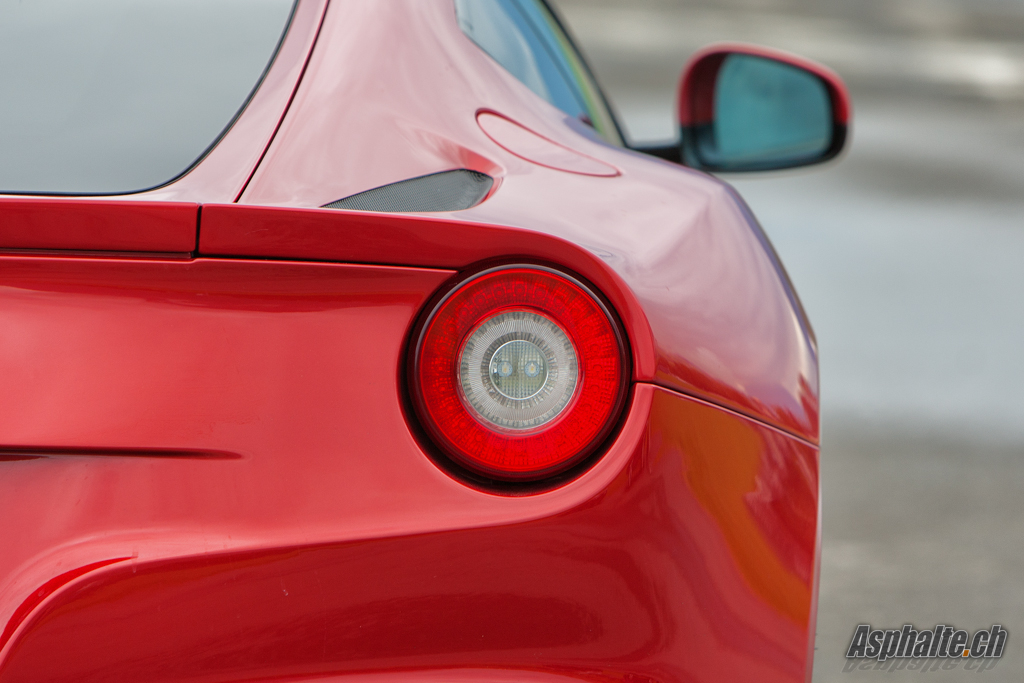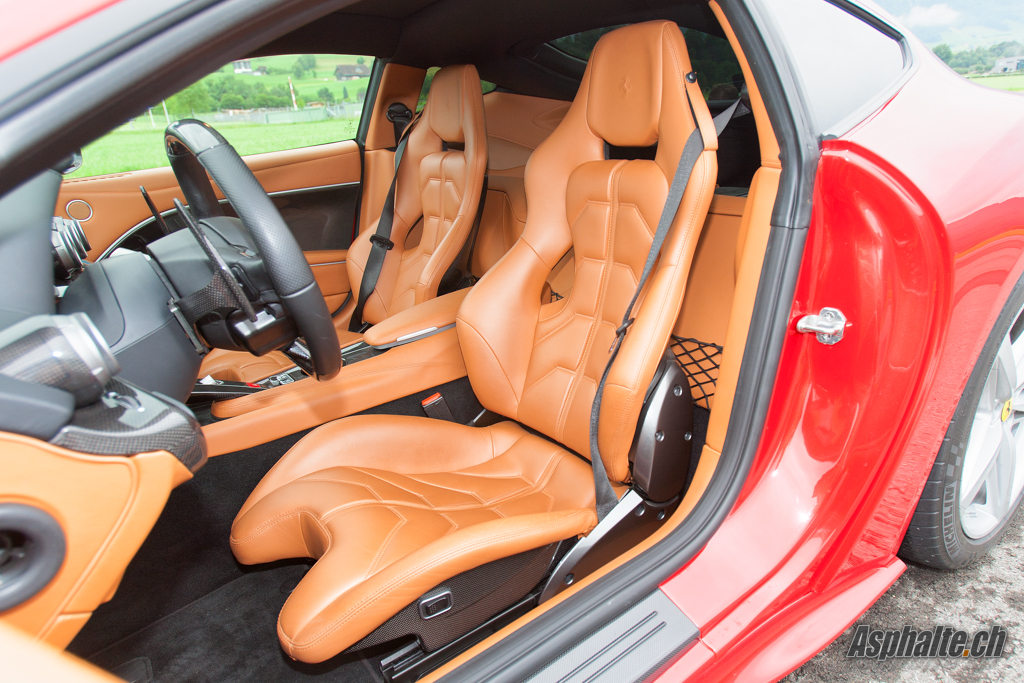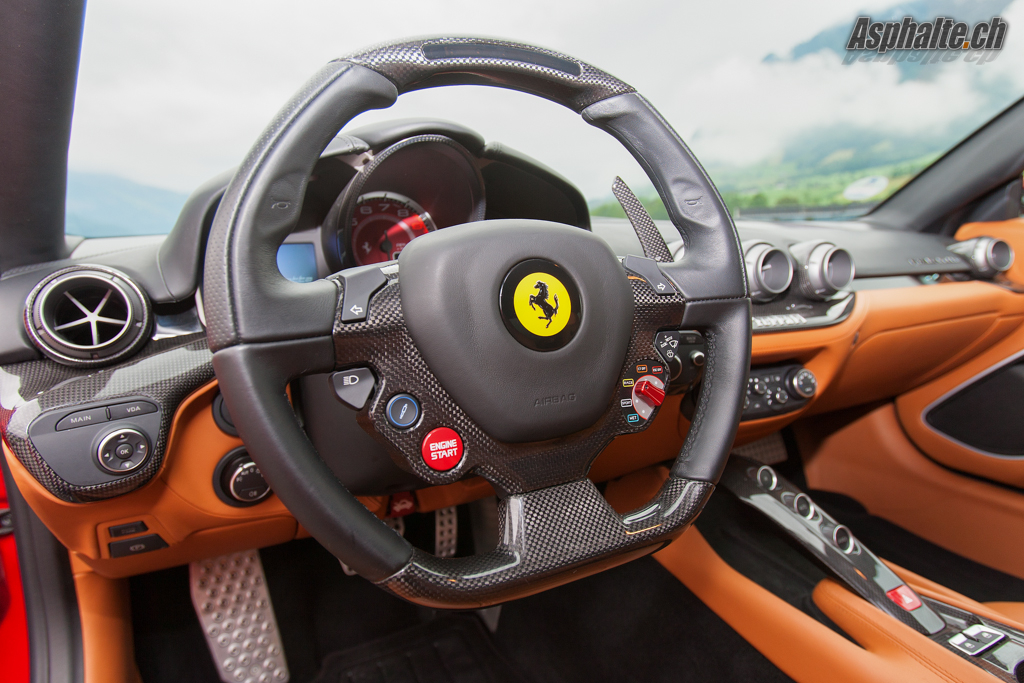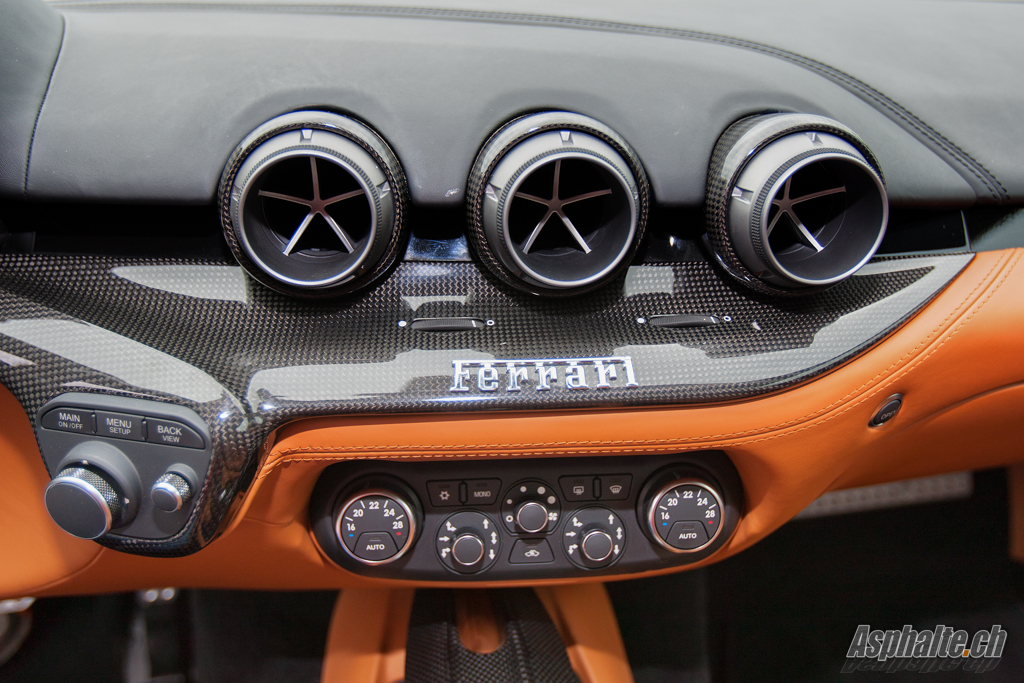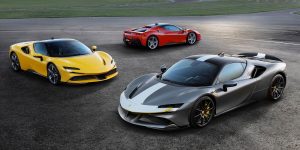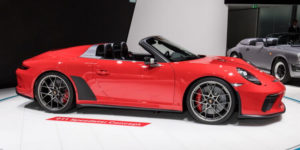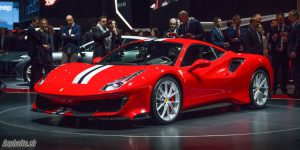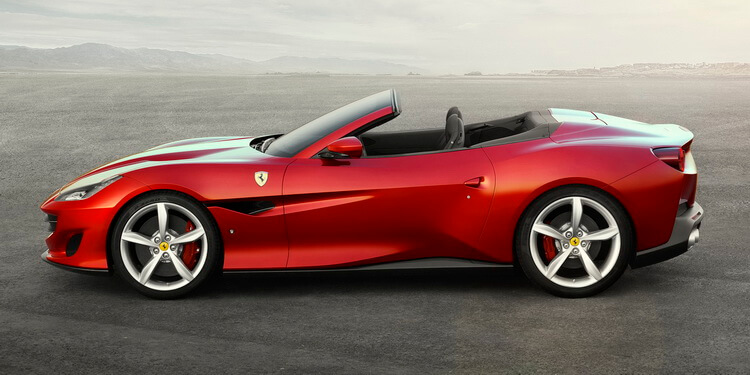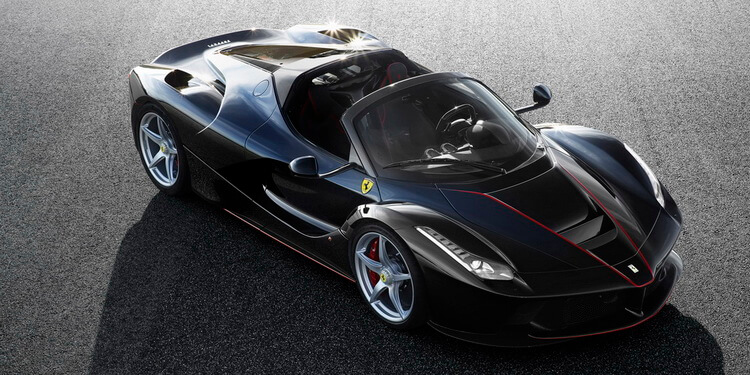Road Test: Ferrari F12 Berlinetta
The F12 design language walks a fine line between elegance and sheer aggression. The front fascia is dressed with the elongated headlight units of the 458 and FF, but they daytime lights are now L-shaped light pipes instead of rows of discrete LEDs. Surfaces and volumes are more dramatic than on the FF, but the grille is faithful to the traditional rectangular pattern common to Ferrari V12 GTs since decades. The Aero-Bridge grooves run on the flanks in a gentle climb to die on the rear haunches. The F12 has a hatchback, a first on front-engined V12 Ferraris. In spite of the absence of wings, Ferrari claims a 75% increase in downforce to 123kg at 200 km/h in comparison with the 599 GTB.
The interior design is also completely new. First of all, it is spacious, and that is a rare and precious feature on a super GT. The luggage capacity is an uncommonly large, with a roomy and accessible boot, a removable shelf system and the rear shelf with its trademark leather belts. The two optional luggage sets are eye-wateringly expensive, but the capacity is there, an invitation to Grand Touring. The dashboard design is built around the large instrument cluster. In the center, a surprisingly dark tachometer. The two adjacent LCD displays can display a plethora of technical or practical information. While it is easy to switch between the modes of the left screen, it is not recommended to try changing the setup of the right LCD while driving. Two control pods, located on either side of the steering wheel, allow control and navigation through the multiple functions available. All of the switchgear deserves a commendable mention for their quality. Every notch, every click is sharp and precise, delivering the feeling of precision and technology expected from such a product. The five circular vents are gorgeous cast alloy parts, and the numerous carbon inserts make the interior of this test car a very, very special place to be. The door trim, the dashboard inserts, the center console down to the carbon cup holder are all extra, expensive and well worth the money. The svelte and sculpted design of the optional Racing seats are an ideal match for such a sporty and luxurious interior. The standard seats (as seen in blue hide on the Grigio Aluminio car showcased at the 2012 Geneva Autoshow) would look out of place in my opinion.
The optional carbon LED steering wheel is a monument to the glory of automotive excellence. Grouping the now traditional Manettino, the Start button, the damping selector and all of the usual commands normally carried on articulated controls, the wheel is another embodiment of the technical feel Ferrari wants to give to its cars. Some may complain about being extracted from an entrenched routine, but the fact to the matter is that Ferrari’s approach is logical and functional, provided that you accept a short learning curve.



